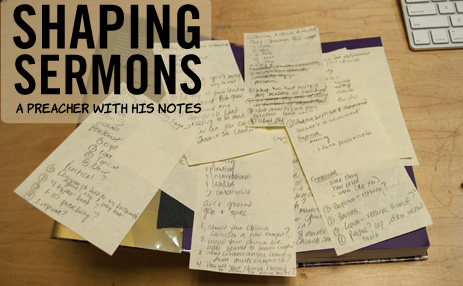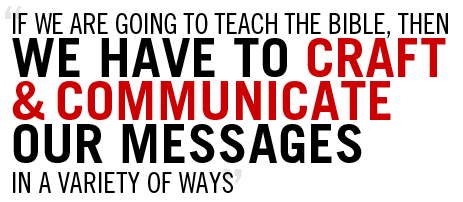Latest
-
Objections to the Christian Faith from the Unchurched and De-Churched
 Tue Dec 02, 2014
Tue Dec 02, 2014
by Resurgence -
Craig Groeschel: We Innovate for Jesus
 Tue Oct 14, 2014
Tue Oct 14, 2014
by Resurgence -
Mark Driscoll: Revelation
 Tue Oct 07, 2014
Tue Oct 07, 2014
by Resurgence -
RESURGENCE LEADERSHIP #034: JOHN PIPER, WHY I TRUST THE SCRIPTURES, PART 2
 Tue Sep 30, 2014
Tue Sep 30, 2014
by Resurgence -
Resurgence Leadership #033: John Piper, Why I Trust the Scriptures, Part 1
 Tue Sep 23, 2014
Tue Sep 23, 2014
by Resurgence

Archives
Shaping Sermons: A Preacher With His Notes
Preacher series: Click | View Series 
Preaching Styles
In seminary and in conversations with other preachers it seems like everyone who talks to me about preaching asks the same questions: Are you a storyteller or an exegete? Are you topical or expositional? Do you preach narratively or propositionally? My answer to these questions is “Yes, and amen!” The Bible shows us all of these things. The Bible has wonderful, well-crafted stories, but sometimes it simply reports facts and propositions. Biblical authors teach on a variety of topics and they often do so by going point-by-point through other Scriptures. Some passages take twists and turns that you don’t expect, using metaphors and symbolism, while other passages focus on clear commands and imperatives. Because Scripture contains various types of sermons and various literary genres, there is no prescribed way to preach a text. If we are going to teach the Bible, then we have to craft and communicate our messages in a variety of ways.
Measuring Sermons
My approach to preaching is like laying carpet. When I first moved to St. Louis to plant our church, I laid carpet as a bi-vocational pastor. Laying carpet requires several steps. First, the carpet must be measured and cut to make sure it fits the space. Then the carpet must be stretched so that it doesn't wrinkle once it's down. And finally, good carpet-layers learn how to hide the seams so that you don’t see individual pieces shoved together side-by-side, but instead, see a floor covered by what looks like a single piece of carpet.  We "measure" our sermons by doing excellent scholarship in our preparation. We learn the parameters of a text and fit our thoughts into the framework of the text. We retrieve our main points from the text and allow it to guide our sermon. We "stretch" our sermons by covering the most important points of the text. We ask the Holy Spirit to help us discern which points to leave in and which ones to leave for another sermon. Lastly, we communicate the truths of the text in a way that "smoothes out the wrinkles," allowing people to apply the truths of Scripture in a way that holds the author's intended shape.
We "measure" our sermons by doing excellent scholarship in our preparation. We learn the parameters of a text and fit our thoughts into the framework of the text. We retrieve our main points from the text and allow it to guide our sermon. We "stretch" our sermons by covering the most important points of the text. We ask the Holy Spirit to help us discern which points to leave in and which ones to leave for another sermon. Lastly, we communicate the truths of the text in a way that "smoothes out the wrinkles," allowing people to apply the truths of Scripture in a way that holds the author's intended shape.
Hiding the Seams
We hide the seams by teaching biblical truth in a way that is understandable and “feels” linear, even if the text itself isn’t necessarily linear in its thought progression. Likewise, because the Bible is a single, big story, containing many smaller stories, we can make any text "feel" narrative. Sermons must have a logical progression if they are to be understood. And every sermon must weave the smaller story of the text into the greater story of the Bible. When sermons “feel” both linear and narrative, they reach a wide variety of people, from artists to engineers.